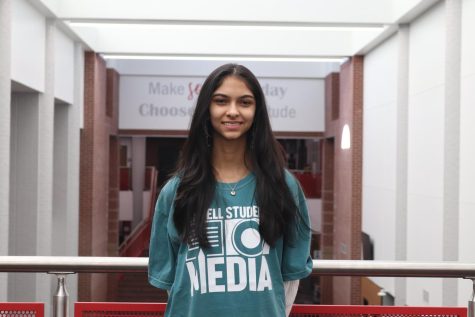The fairytale ending is not what we thought it was
Disney movies such as “Snow White and the Seven Dwarfs,” “Tangled” and “Aladdin” present toxic relationships to the audience as ideal. The Sidekick executive editorial page editor Manasa Mohan thinks Disney has created bad role models for young children by focusing on conforming to society’s standards.
February 10, 2023
You’ve heard it before. The classic tale where the female lead falls in love with a male prince. Some obstacle or challenge gets in the way of their “happily ever after.” The prince valiantly fights whatever he has to, whether it’s a dragon or monster, to be reunited with his true love.
The inevitable happens: the screen flashes to a “and they lived happily ever after” and that’s it. End of story.
Well, not necessarily.
The story begins in 1937 with Snow White and the Seven Dwarfs. The film catapulted Walt Disney to fame and established him as “one of the world’s most innovative and creative moviemakers.” Disney went on to create countless iconic princesses, such as Snow White, Cinderella, Sleeping Beauty, Ariel, Belle, Jasmine, Mulan, Pocahontas, Rapunzel, Tiana, Anna and Elsa; but the list never really ends.
These princesses are and will remain popular role models for young children likely because of their global reach and the constantly outpouring live action adaptations. Their popularity does not detract from the fact that they are, simply put, bad role models for children.
If you take a look at all of the Disney princesses lined next to each other, there’s one common thread tying them all together. They all fit into a certain beauty standard; they all have the “perfect body type,” which is a concept thereby instilled in children from a very early age.
Above Average, an internet production company, found that in six out of 11 Disney princesses, their eyes were larger than their waist. Examples include Elsa, Belle, Jasmine and Aurora––some of the most popular princesses of the studio. Ultimately you cannot ignore the completely unrealistic standards and proportions perpetuated by Disney princesses.
The Middlebury blog network reports that 94% of fairytale and princess movies mention physical appearance. In each movie, the discussion occurs on average 13.6 times with a range from zero to 114 times for female physical appearance and a range of zero to 35 times for male physical appearance.
More often than not, when the Disney villains are examined, they have certain “imperfections” that are highlighted. Characters like Ursula from the Little Mermaid, Anastasia and Drizella from Cinderella leave a lasting impression on children: there is a correlation between people who do not conform to society’s beauty standards and negative, even villainous, personality traits.
In 31% of stories, beauty and goodness are associated with one another. The most common example correlates princesses with innocence. Ugliness and evil are related in 17% of princess stories.
But all of that just hits the surface level of the problems with these movies. Take a look at the romantic relationships in these films, which are some of the most prominent facets of a Disney film. Ariel changed her entire personality to fit into Prince Eric’s world. The Snow White and Sleeping Beauty films have obvious issues regarding consent. Belle developed Stockholm syndrome. Aladdin lied to Jasmine for the majority of their relationship, but she forgave him.
No matter how the movies end, it does not detract from the blatant truth: these relationships are toxic and unhealthy and paint a negative picture of relationships that young children now idolize and grow up to believe are picture perfect. The ideal, fairy-tale romance.
In these relationships, it is a common theme that the female lead plays the “damsel in distress.” That stereotype imposes the wrong idea on impressionable girls that they need to wait for her knight in shining armor to come and save her, rather than picking up the sword and saving herself. In Princess Jasmine’s case, she was set to marry someone at 16 if she wished to be queen. Her capabilities and abilities played no part in her ascension to the throne in any way whatsoever. All of these situations make it out to be that a man, or a charming prince in Disney’s case, will come into the picture and all of the woman’s difficulties and hardships will simply vanish with his presence in her life.
Disney has certainly worked to rectify some of these issues with some more powerful leads in their films: Mulan, Moana, Anna, Elsa and Merida and those characters deserve to be appreciated and applauded. Mulan taught us that girls shouldn’t have to give up their strengths and abilities just because they are girls. Moana taught us that as long as you have faith in yourself, you will always have the power to make things happen.
Still, Disney has a long way to go to help young children realize that they don’t need to fit into certain stereotypes to be loved or feel the need to shape themselves to fit a certain standard.











